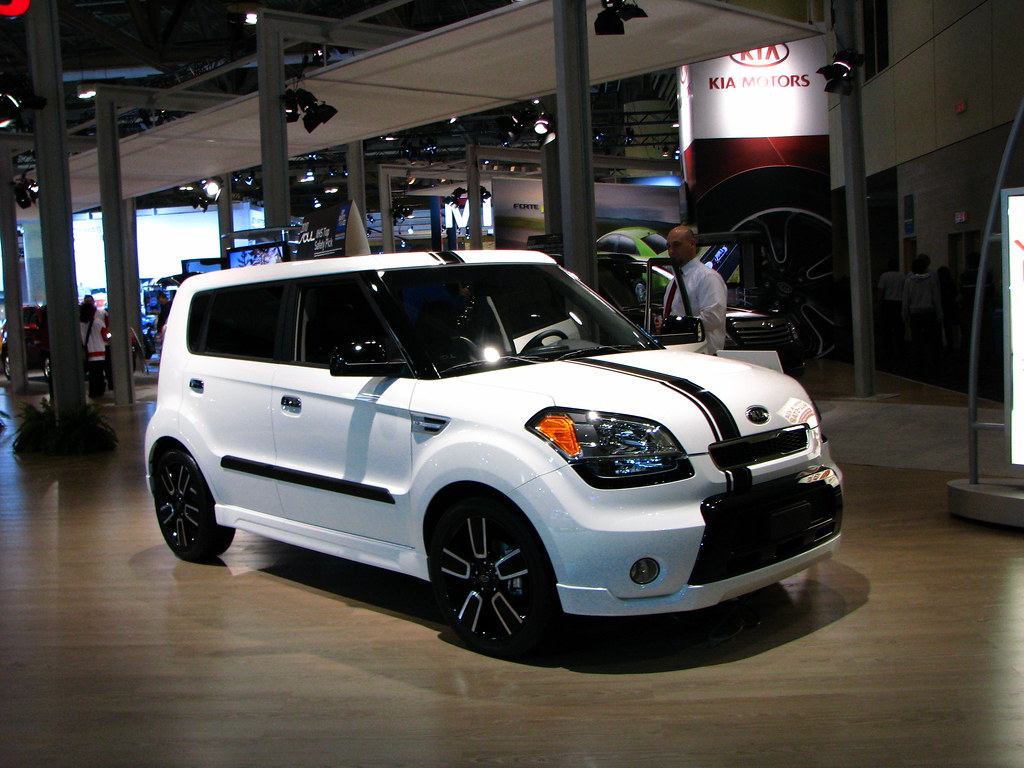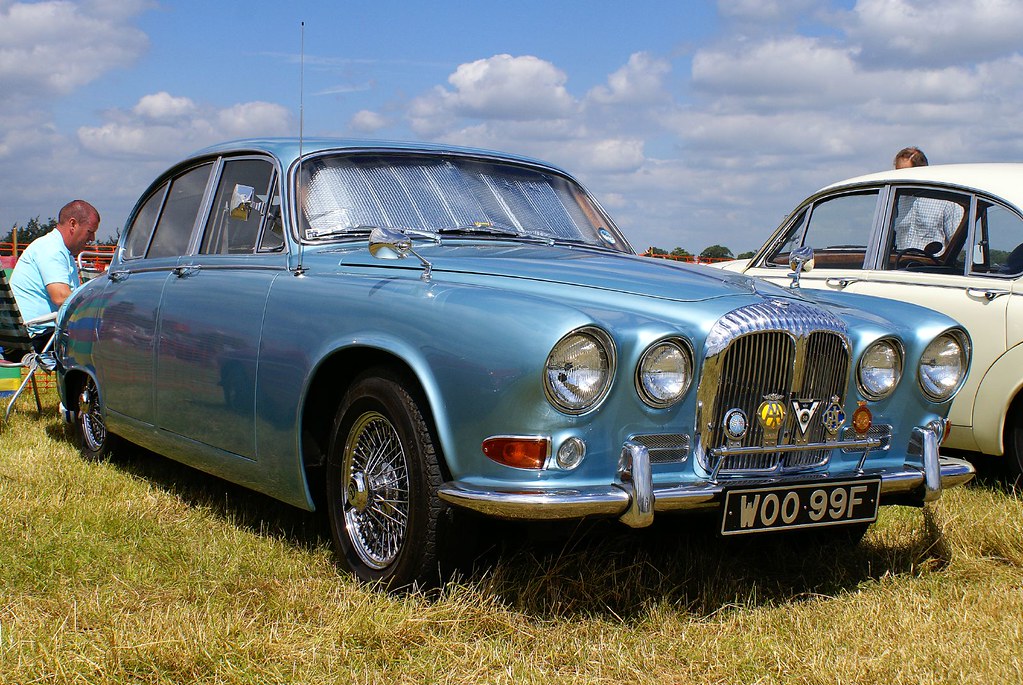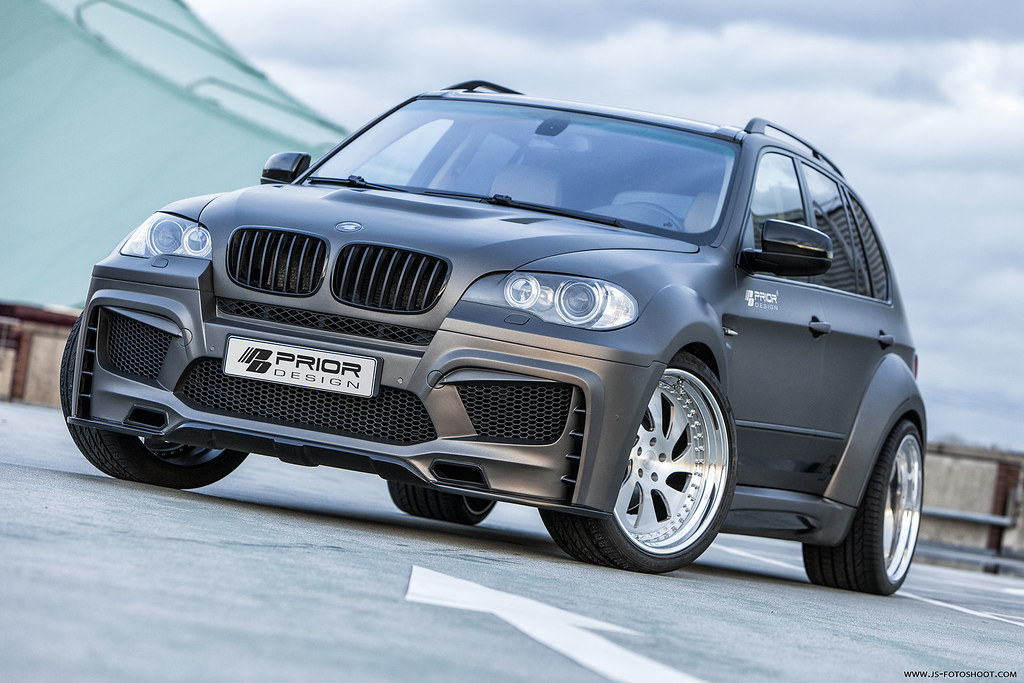
Whether you’re navigating tight urban streets, crowded parking garages, or parallel parking on a slope, how a car handles low-speed maneuvering can truly make or break your day. Some vehicles are brilliantly engineered to glide into tight spaces with remarkable ease, boasting thoughtfully designed proportions, excellent visibility, and highly responsive steering systems that work with the driver. These are the cars that feel like an extension of your body, turning what could be a nerve-wracking experience into a surprisingly calm one.
Others, however, seem to fight you every inch of the way, transforming even the most basic parking task into a frustrating ordeal. This is often due to misleading camera angles, excessively wide turning radii, or simply a lack of curb awareness, frequently leading to misjudged clearances or awkward angles. Such design flaws can quickly erode a driver’s confidence and, unfortunately, often result in unwelcome scrapes or dents to the vehicle.
In this initial section, we will delve into five cars that consistently excel at parking, earning them a reputation as favorites for city dwellers, new drivers, and anyone who regularly confronts challenging parking scenarios. These models offer a blend of practical features and dimensions that genuinely simplify the process, proving that good design extends far beyond performance or aesthetics into real-world usability and stress reduction behind the wheel.
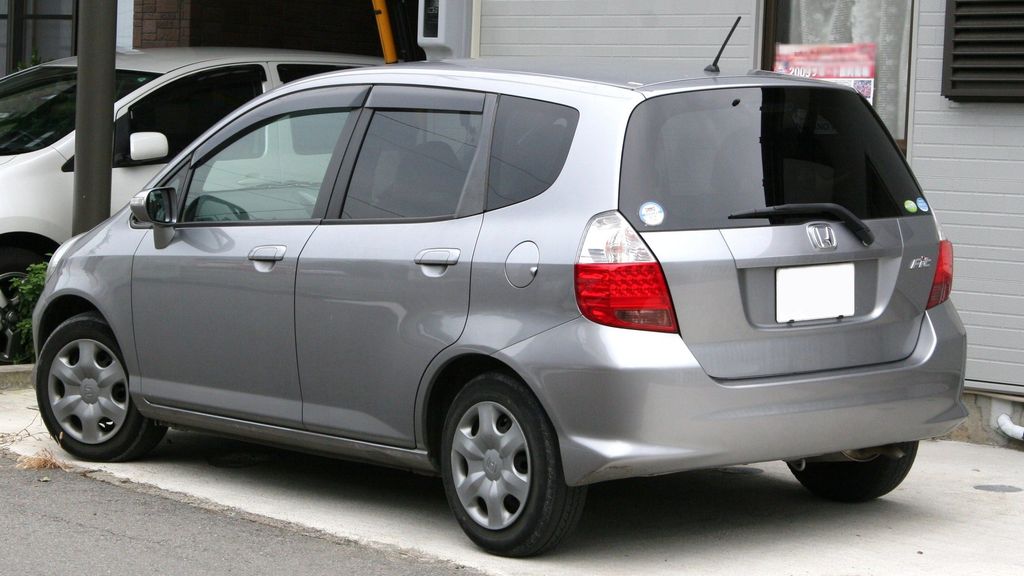
1. **Honda Fit**The Honda Fit has long been praised for its intelligent use of space and city-friendly demeanor, establishing itself as one of the easiest cars to park in nearly any setting. Despite its subcompact classification, the Fit never feels cramped inside, yet it maintains a delightfully compact footprint on the outside. This thoughtful balance makes it a standout choice for urban navigation and tight parking spots.
Its remarkably short overall length, just over 160 inches, is a critical factor in its parking prowess, allowing it to fit into spaces that larger vehicles would simply bypass. Complementing this is a tight turning radius of about 34.5 feet, which makes it a natural for parallel spots and navigating the intricate layouts of small parking lots. These dimensions combine to give drivers an immediate advantage in congested areas.
One of the standout features that significantly aids in parking is the Fit’s expansive greenhouse. Its tall windows and a low beltline provide drivers with an unusually commanding and clear view of their surroundings. This wide, unobstructed visibility dramatically reduces guesswork when backing into a spot or trying to accurately gauge the proximity of nearby obstacles, enhancing safety and confidence.
Honda further equipped the Fit with a multi-angle rearview camera as standard, offering drivers the flexibility to toggle between normal, wide, and top-down views. This invaluable triple perspective becomes a serious asset when parking in cluttered or visually confusing areas, allowing for precise placement. Another often overlooked advantage is the Fit’s electric power steering, which is notably light at low speeds, enabling quick, effortless directional changes—a real plus when threading between cars or avoiding curbs.
The Fit’s distinctive boxy shape also greatly contributes to its parking capabilities. The vehicle ends almost exactly where the windows terminate, providing drivers with excellent corner judgment and minimizing visual miscalculations. With very little overhang to miscalculate, and without the odd tapering that frequently plagues many modern hatchbacks or sedans, drivers often comment on how confident they feel parking this car, even in notoriously crowded cities like San Francisco or Boston. For students, retirees, or first-time drivers navigating tight quarters, the Honda Fit isn’t just a smart pick; it’s one that can significantly reduce anxiety behind the wheel and save precious time in high-traffic areas.
Car Model Information: 2020 Honda Fit LX
Name: Honda Fit/jazz
Manufacturer: Honda
Aka: Dongfeng Honda
Production: June 2001 – present
Class: Subcompact car
BodyStyle: hatchback
Layout: Front-engine, front-wheel-drive layout,Front-engine, four-wheel-drive layout
Platform: Honda Global Small Car
Predecessor: Honda Logo
Successor: Honda City#GN
Categories: 2010s cars, 2020s cars, ASEAN NCAP superminis, All-wheel-drive vehicles, All Wikipedia articles written in British English
Summary: The Honda Fit or Honda Jazz is a small car manufactured and marketed by Honda since 2001 over four generations. It has a five-door hatchback body style and is considered a supermini in the United Kingdom, a subcompact car in the United States, and a light car in Australia. Marketed worldwide and manufactured at ten plants in eight countries, sales reached almost 5 million by mid-2013. Honda uses the “Jazz” nameplate in Europe, Oceania, the Middle East, Africa, Hong Kong, Macau, Southeast Asia and India; and “Fit” in Japan, Sri Lanka, China, Taiwan and the Americas. Sharing Honda’s global small car platform with the City, Airwave, first-generation Mobilio, Freed and HR-V/Vezel, the Fit is noted for its one-box or monospace design; forward-located fuel tank; configurable seats that fold in several ways to accommodate boot space in varying shapes and sizes— and boot volume competitive to larger vehicles. Honda released hybrid petrol-electric versions of the Fit in Japan in October 2010 and in Europe in early 2011. In 2012, Honda released the Fit EV in the United States and Japan, a limited-production all-electric version based on the second-generation, widely regarded as a compliance car. The fourth-generation model released in 2019 is currently sold in Japan, Europe, China, Taiwan, South Africa, Brunei and Singapore. Starting from 2020, the model was phased out in most Southeast Asian and Latin American countries, to be replaced by the larger City Hatchback, while it was withdrawn entirely from the North American market due to falling demand within the subcompact segment.
Get more information about: Honda Fit
Buying a high-performing used car >>>
Brand: Honda Model: Fit
Price: $16,280 Mileage: 70,292 mi.
Read more about: The DIYer’s Essential Guide: Unlocking Savings and Success with Used Car Parts
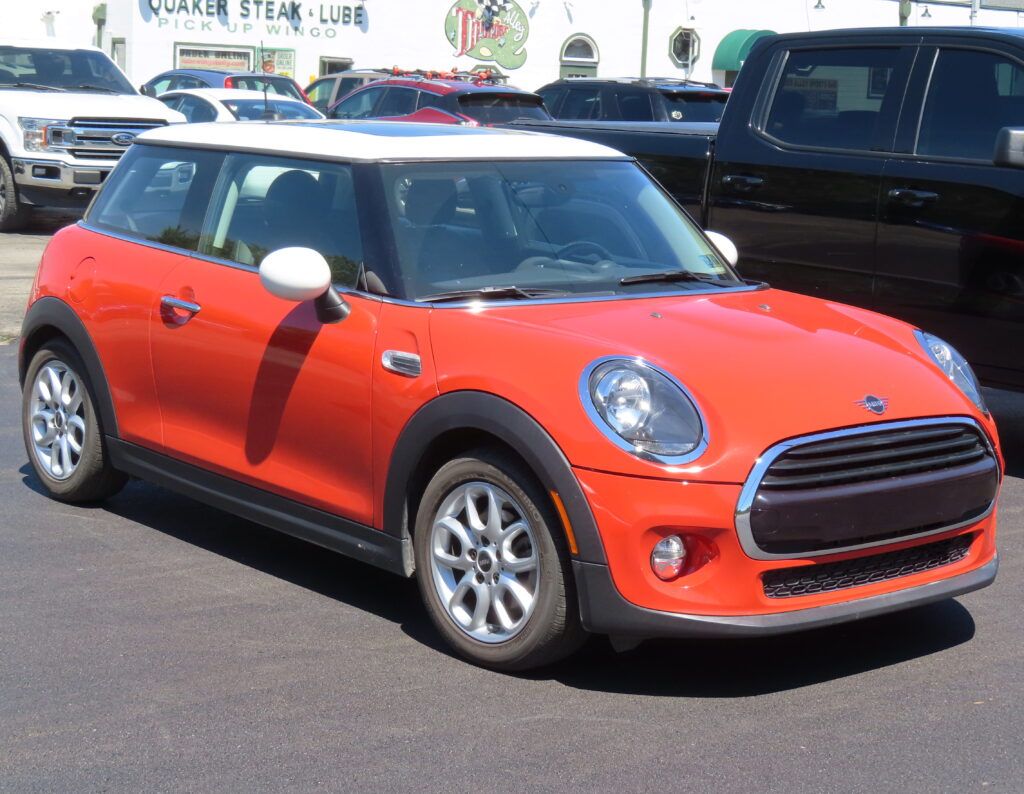
2. **Mini Cooper 2-Door Hardtop**The Mini Cooper 2-Door Hardtop is practically tailor-made for city driving, and nowhere is this more evident than when it’s time to parallel park or squeeze into a narrow space. Despite its premium branding and undeniably stylish appeal, the Cooper steadfastly remains one of the easiest cars to park, thanks to its incredibly compact size, its renowned go-kart-like handling, and its well-calibrated parking technology.
Measuring just over 152 inches long, the 2-door Mini Cooper stands as one of the shortest cars available on the market, immediately granting it a considerable advantage in small-space maneuverability. This remarkably short length, coupled with a turning radius of approximately 34.8 feet, means the car can execute sharp U-turns or fit into spots that would be entirely impossible for larger sedans or SUVs. It is also notably narrower than most vehicles in its class, allowing for more lateral wiggle room when parallel parking along tight curbs or in crowded apartment lots.
However, it’s not merely about dimensions; the Mini’s low-slung seating position provides drivers with a superb sense of road contact, which is crucial for precise maneuvering. Additionally, the upright windshield and distinctly square roofline work together to significantly improve sightlines in every direction. The car’s responsive steering further adds a layer of precision during tight turns, empowering drivers to adjust angles quickly and with unwavering confidence.
Unlike some competitors that can overwhelm drivers with vague or confusing camera feeds, the Mini’s optional rear parking sensors and dynamic backup camera provide simple, accurate cues without overloading you with excessive information. Premium trims also extend this assistance with Park Distance Control, which uses audible alerts to warn drivers of proximity threats. For those seeking even more assistance, Mini’s self-parking feature can automatically detect a viable space and expertly steer the vehicle into it, an ideal solution for anyone still building confidence in parallel maneuvers.
The Cooper’s square rear end also deserves a special mention for its practical benefit. This design eliminates the frustrating guessing game of precisely how far the car extends beyond the rear window. You can clearly see where it ends, allowing you to stop there with certainty. This level of visual clarity is surprisingly rare in today’s increasingly sloped and sculpted hatchbacks. All these factors collectively contribute to a vehicle that doesn’t just park easily, but actively fosters driver confidence, making it a favorite among new drivers for its predictability and among experienced city commuters for its sheer agility. It’s a car that’s fun to drive and even more satisfying to effortlessly slide into tight parking spots with flair.
Car Model Information: 2020 BMW X3 xDrive30i
1: [object Object]
2: [object Object]
Name: Mini
Logo: File:MINI logo.svg
Producttype: Cars
Currentowner: BMW
Producedby: BMW
Related: John Cooper Works
Origin: United Kingdom
Introduced: bulleted list
Markets: Worldwide
Ambassadors: Stefan Richmann (Mini brand CEO)
Previousowners: British Motor Corporation,British Leyland,Rover Group
Website: mini.com
Categories: 1969 establishments in England, 2000 mergers and acquisitions, 2000s cars, 2010s cars, All Wikipedia articles written in British English
Summary: Mini (stylised as MINI) is a British automotive brand founded in Oxford in 1959, marketed by German multinational automotive company BMW since 2000, and used by them for a range of small cars assembled in the United Kingdom, Austria, Netherlands (until 16 February 2024), China and Germany. The current Mini range includes the Cooper Hardtop/Hatch/Convertible (three and five-door hatchback), Aceman and Countryman (five-door crossovers). The word Mini has been used in car model names since 1959, and in 1969 it became a brand in its own right when the name “Mini” replaced the separate “Austin Mini” and “Morris Mini” car model names. BMW acquired the brand in 1994 when it bought Rover Group (formerly British Leyland), which owned Mini, among other brands.
The original Mini was a line of British small cars manufactured by the British Motor Corporation (BMC), which in 1966 became part of British Motor Holdings. This merged with Leyland Motors in 1968 to form British Leyland. In the 1980s, British Leyland was broken-up and in 1988 Rover Group, including Mini, was acquired by British Aerospace. Mini models included the Morris Mini-Minor and the Austin Seven, the Countryman, Moke, 1275GT and Clubman. Performance versions of these models used the name Cooper, due to a partnership with racing legend John Cooper. The original Mini continued in production until 2000.
Following BMW’s acquisition of Rover Group, BMW broke up the company but retained the Mini brand, beginning development of a modern successor to the Mini which was launched in 2001 by BMW and built at the historic former Morris Motors ‘Plant Oxford’ site in Cowley, Oxfordshire. The Mini Clubman, Coupe and Roadster were also assembled here. The third (F57) generation Mini Convertible and second (F60) generation of the Countryman were assembled at VDL Nedcar in Born, Netherlands. The Mini (F56) 3-door Hatch/Hardtop was assembled at both plants, with the (F55) 5-door being exclusively assembled at Oxford. The Paceman and first generation (R60) Countryman were assembled by Magna Steyr in Austria. The third generation (U25) of the Mini Countryman is produced in Germany at BMW’s Leipzig plant. From 2024, all combustion engined (F65/F66/F67) Mini Cooper hatch and convertible production will be centred at Oxford. A total of 301,526 Mini vehicles by BMW were sold worldwide in 2012.
Mini vehicles have been active in rallying and the Mini Cooper S won the Monte Carlo Rally on three occasions, in 1964, 1965 and 1967. Mini participated in the World Rally Championship in 2011 and 2012 through the Prodrive WRC Team.
Get more information about: Mini (marque)
Buying a high-performing used car >>>
Brand: Mini Model: Cooper 2-Door Hardtop
Price: $26,485 Mileage: 40,004 mi.
Read more about: Engineer’s Nightmare: 14 Classic Models That Define Automotive Repair Challenges in 2025
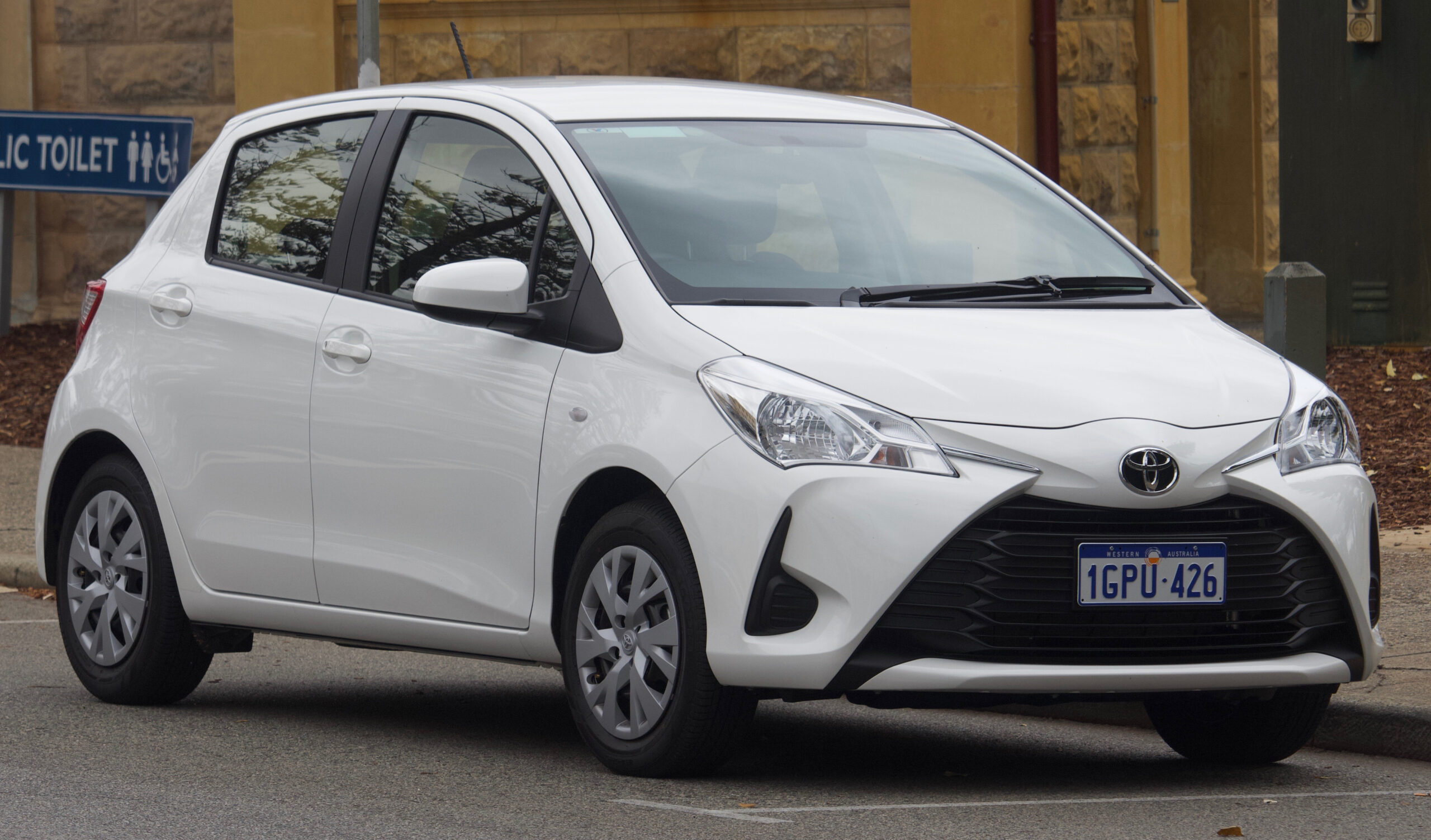
3. **Toyota Yaris Hatchback**The Toyota Yaris Hatchback brilliantly combines budget-friendly practicality with exceptional urban maneuverability, making it an outstanding choice for drivers who frequently struggle with parking or simply desire a stress-free driving experience. While Toyota did discontinue the Yaris in some markets after 2020, used models remain highly sought-after by city dwellers precisely because of their compact dimensions, responsive handling, and reliable driver-assistance features, which prove invaluable in congested environments.
Measuring just under 162 inches in length, the Yaris Hatchback is perfectly sized to fit into most urban parking spaces, yet it still offers a stable wheelbase that instills drivers with confidence on the road. The car’s turning radius, a tight approximately 32.2 feet, is among the very best in its class, affording it remarkable maneuverability in tight quarters. Combine these attributes with a lightweight chassis of around 2,300 pounds, and you get a vehicle that is both nimble and light on its feet, particularly during low-speed maneuvers such as reverse parking or precise parallel adjustments.
Toyota meticulously designed the Yaris with excellent forward and side visibility, a crucial factor for urban driving. Its thin roof pillars and generously sized window shapes make it remarkably easy to spot pedestrians, curbs, or low obstacles, significantly enhancing safety. Even when the rear view might be partially obstructed by cargo, the standard backup camera ensures that drivers do not have to rely solely on mirrors, providing a clear visual aid. This feature is particularly helpful for newer drivers who are still mastering their distance judgment skills.
Furthermore, the Yaris’s compact, distinctly squared-off rear end and short overhangs simplify the process of gauging precisely where the car ends. This is an essential visual cue for parking in reverse without the common issue of over-shooting a spot. The Yaris also employs a firm and highly predictable steering system, which means that every turn of the wheel translates cleanly and directly to vehicle movement, eliminating the need for frequent, frustrating corrections during delicate parking maneuvers.
Another major plus for the Yaris is its admirable simplicity. There’s no overly complicated interface or overwhelming screen overlays for its parking systems; instead, it offers clean, straightforward visual and audible cues that effectively help drivers stay aligned and within the lines. For many drivers, this level of straightforward, no-fuss functionality is exactly what is needed in chaotic urban parking situations. Whether you’re navigating a tight multi-story garage or skillfully squeezing into street parking between bulky SUVs, the Yaris Hatchback genuinely makes life easier. It doesn’t try to outthink the driver; it simply provides an excellent balance of visibility, design execution, and overall ease of use. If stress-free parking is a high priority, the Toyota Yaris unequivocally deserves a close look.
Car Model Information: 2009 Toyota Yaris S
Name: Toyota Yaris
Caption: 2020 Toyota Yaris Design Hybrid (MXPH11, UK)
Manufacturer: Toyota
Aka: unbulleted list
Production: unbulleted list
Class: Supermini
BodyStyle: unbulleted list
Predecessor: unbulleted list
Categories: 2000s cars, 2010s cars, 2020s cars, All-wheel-drive vehicles, All articles containing potentially dated statements
Summary: The Toyota Yaris is a supermini/subcompact car sold by Toyota since 1999, replacing the Starlet and Tercel. Up to 2019, Toyota had used the Yaris nameplate on export versions of various Japanese-market models, with some markets receiving the same vehicles under the Toyota Echo name through 2005. Starting in 2020, the Yaris nameplate began to be used in Japan, which replaced the Vitz nameplate. The Yaris nameplate has also been applied to other vehicles. From 1999 to 2005, the nameplate had been used for the Yaris Verso mini MPV sold in Europe, where it was known in Japan as the FunCargo. Since 2020, the nameplate has also been used for the subcompact crossover SUV offering called Yaris Cross. In North America, most Yaris sedan models sold from 2015 to 2020 and Yaris hatchbacks sold from 2019 until 2020 were restyled versions of the Mazda2, produced and developed by Mazda. In 2020, Toyota introduced the GR Yaris, which is a three-door performance-oriented variant of the XP210 series Yaris using the Gazoo Racing branding. It is built as a homologation model for the FIA World Rally Championship. The name “Yaris” is derived from “Charis”, the singular form of Charites, the Greek goddesses of charm and beauty. As of March 2020, the Yaris has sold 8.71 million units worldwide.
Get more information about: Toyota Yaris
Buying a high-performing used car >>>
Brand: Toyota Model: Yaris
Price: $8,961 Mileage: 78,803 mi.
Read more about: Navigating the Urban Jungle: The 12 Best Affordable Hybrid SUVs for Over 40 MPG in City Driving
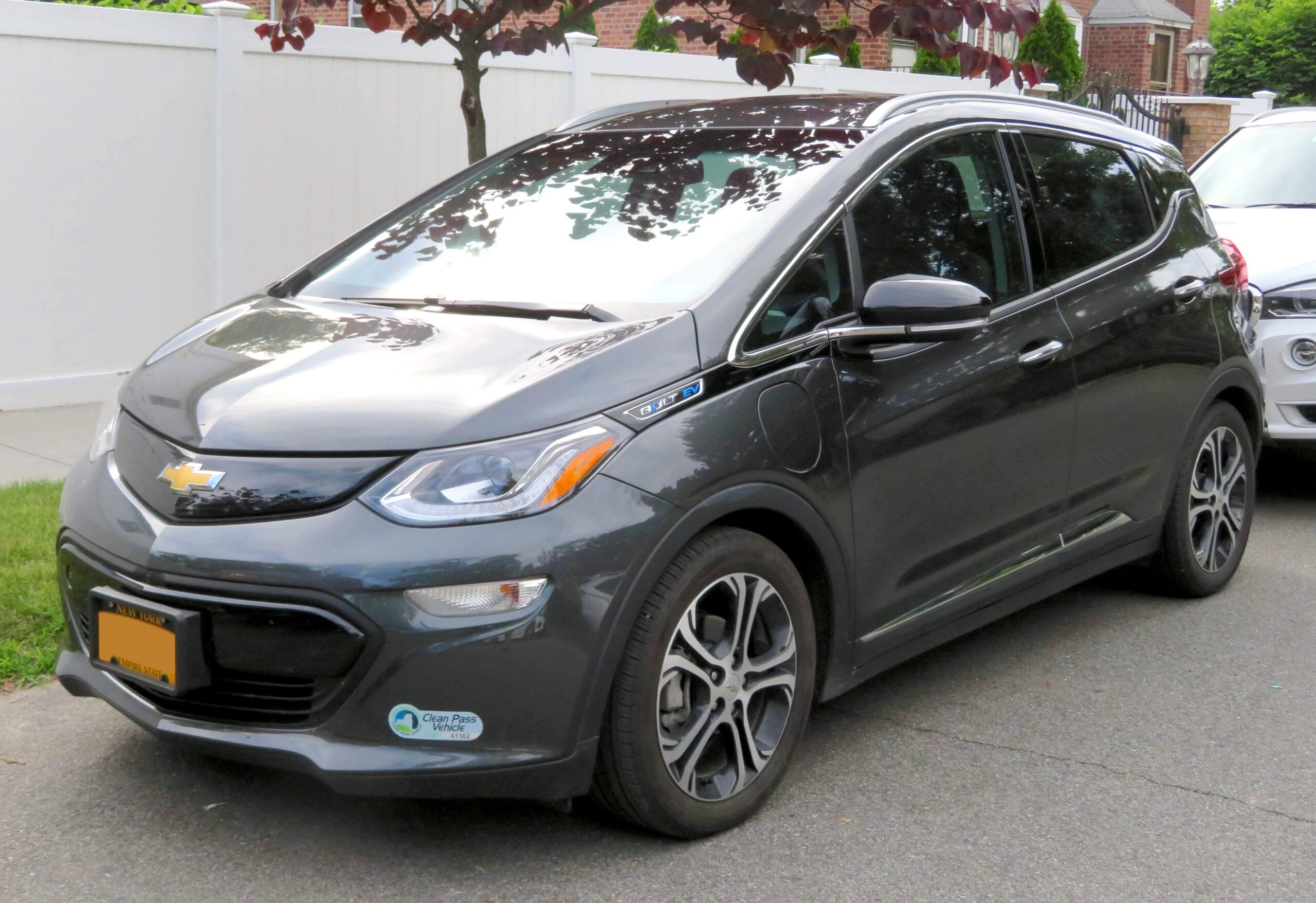
4. **Chevrolet Bolt EV**The Chevrolet Bolt EV is not just a strong contender in the rapidly expanding electric vehicle market; it also genuinely excels in urban usability, particularly when it comes to parking. Its compact footprint, seamlessly combined with EV-specific engineering that prioritizes low-speed responsiveness and superior visibility, makes it one of the easiest modern vehicles to confidently maneuver in tight spaces, offering a surprising degree of precision and control.
Measuring approximately 164 inches long, the Bolt EV is only slightly larger than traditional subcompacts like the Honda Fit or Toyota Yaris, yet it delivers the distinct high-tech advantage of a fully electric drivetrain. One of the Bolt’s most significant assets for parking is its instant low-speed torque. Unlike many gasoline engines that may exhibit a noticeable delay in throttle response at low RPMs, the Bolt offers immediate and consistent control, enabling drivers to make tiny, exacting adjustments with remarkable precision when backing into or easing out of spaces. This characteristic is a game-changer for delicate parking.
Crucially, the Bolt’s steering is meticulously tuned to be light and highly responsive at low speeds, a feature that empowers new or cautious drivers to confidently execute parking maneuvers without requiring aggressive wheel input. Chevrolet also generously equips the Bolt with a high-resolution rearview camera as standard, and on upper trims, offers an optional Surround Vision system. This sophisticated Surround Vision system provides a comprehensive 360-degree bird’s-eye view around the car, effectively eliminating frustrating blind spots and helping drivers to better understand their exact position relative to curbs, surrounding cars, and walls.
Another huge plus for the Bolt EV’s parkability is its relatively high seating position and generously sized windows, which together provide a commanding and unobstructed view of the vehicle’s surroundings. The dashboard and hood are short and purposefully sloped downward, a design choice that minimizes visual obstructions while moving forward into a parking spot or pulling up to a curb. Unlike some small cars with intrusive door designs or awkwardly placed side mirrors, the Bolt’s compact mirror placement and upright side profile make it significantly easier to judge spacing between other vehicles.
Beyond its technical specifications, real-world Bolt EV owners frequently praise how remarkably easy the car is to place into small spots, especially in dense city centers or crowded mall lots. It also stands as an ideal pick for apartment dwellers who contend with tight parking configurations or for commuters needing to skillfully squeeze into narrow electric vehicle charging stalls. In short, the Bolt EV isn’t just good at being electric; it is truly exceptional at being easy to park, offering peace of mind in challenging urban environments.
Car Model Information: 2020 BMW X3 xDrive30i
Name: Chevrolet Bolt EV
Caption: 2022 Chevrolet Bolt EV
Manufacturer: General Motors
Production: unbulleted list
ModelYears: unbulleted list
Class: unbulleted list
BodyStyle: unbulleted list
Layout: Front-engine, front-wheel-drive layout
Predecessor: Chevrolet Spark EV
Categories: 2020s cars, All Wikipedia articles in need of updating, All articles containing potentially dated statements, All articles to be merged, All articles with unsourced statements
Summary: The Chevrolet Bolt EV (marketed in Europe as Opel Ampera-e) is a battery electric subcompact hatchback manufactured and marketed by General Motors under its Chevrolet brand from late 2016 until late 2023, with a brief hiatus between mid-2021 and early 2022.
The first-generation Bolt was developed and manufactured with LG Corporation. Sales of the 2017 Bolt began in California in December 2016; it was released nationwide and international markets release in 2017. A rebadged European variant was marketed as the Opel Ampera-e in mainland Europe. In 2017, the Bolt was the second-best-selling plug-in car in the United States. It was named the 2017 Motor Trend Car of the Year, the 2017 North American Car of the Year, an Automobile magazine 2017 All Star, and was listed in Time magazine’s Best 25 Inventions of 2016. The Ampera-e was discontinued after 2018. By the end of 2020, GM had sold 112,000 Bolt and Ampera-e cars worldwide. The first-generation Bolt had been subject to at least three recalls due to battery fire risks.
In mid-2023, GM officials said they would discontinue the Bolt; after outcry, they announced plans for a next-generation model. The second-generation Bolt, based on the Chevrolet Bolt EUV, was unveiled on October 9, 2025 for model year 2027.
Get more information about: Chevrolet Bolt
Buying a high-performing used car >>>
Brand: Chevrolet Model: Bolt EV
Price: $26,485 Mileage: 40,004 mi.
Read more about: The Unwanted Symphony: MotorTrend’s Six Engines with the Most Divisive Sound Signatures
5. **Kia Soul**The Kia Soul consistently defies conventional automotive expectations, not only with its distinctly boxy design and quirky personality but also in how surprisingly user-friendly it proves to be when maneuvering in tight parking situations. While it may not strictly fit the mold of a traditional subcompact or hatchback, the Soul’s unique proportions and thoughtfully driver-oriented features collectively establish it as one of the most remarkably parkable non-luxury vehicles currently available on the road.
At approximately 165 inches in length, the Soul is similar in size to other urban champions like the Honda Fit or Chevrolet Bolt EV, yet it offers a notably higher driving position—a characteristic that many SUV shoppers particularly appreciate. That elevated height directly translates to better road visibility, which is a pivotal advantage when trying to accurately judge distances to other cars, nearby curbs, or imposing walls. The squared-off hood and vertical rear end are not merely stylistic choices; they are functional design elements that make it significantly easier to visually track precisely where the car begins and ends, eliminating much of the guesswork.
What truly sets the Soul apart is how predictably and intuitively it feels during low-speed maneuvers. Its electric power steering is feather-light and highly responsive, especially when drivers are carefully creeping into a tight spot. The car’s compact wheelbase and short overhangs mean there is considerably less body to account for when making minor corrections, reversing, or pulling forward into a snug garage space. Even when fully loaded with passengers or cargo, the Soul maintains its agility and responsiveness at low speeds, ensuring consistent ease of handling.
Kia generously equips the Soul with a suite of standard features designed to assist drivers, including a wide-angle rearview camera, with higher trims adding beneficial rear parking sensors and blind-spot monitoring. While the car does not boast highly advanced auto-park technology, the tools it does offer are refreshingly intuitive and highly effective. The optional 10.25-inch touchscreen provides a clear and crisp display of backup visuals, and the camera intelligently includes trajectory lines that curve dynamically as you turn the wheel, making it considerably easier to accurately judge your arc while reversing into a space.
The Soul’s tall glass area also plays a major and often underestimated role in its exceptional parkability. With thin roof pillars and generously sized rear windows, drivers enjoy excellent, unobstructed outward visibility, reducing blind spots. It is not uncommon for new drivers, in particular, to comment that they feel truly “in command” while parking this vehicle—a sentiment rarely associated with anything short of a luxury crossover. For urban residents, college students, or anyone who simply wants to avoid the common headache of parking guesswork, the Kia Soul offers a unique blend of charm and practicality in one of the most maneuverable shapes you’ll find on the market today. It makes everyday parking a far less daunting task.
For every vehicle engineered to make parking a seamless experience, there exists another that seemingly complicates every low-speed maneuver near a curb. These cars often feature awkward dimensions, obstructed sightlines, sluggish steering at low speeds, or poorly calibrated camera systems, making them less than ideal for real-world parking scenarios. This can lead to frequent curb rash on wheels, scuffed bumpers, and a general sense of anxiety for drivers unsure of their vehicle’s precise boundaries.
Hitting the curb extends beyond a mere inconvenience; it often signals that a car’s fundamental ergonomics or its visibility package may have significant shortcomings. Such vehicles commonly suffer from substantial blind spots, excessively wide turning radii, generous overhangs, or camera systems that provide a misleading perspective of the vehicle’s immediate surroundings. While these models might boast impressive luxury features or robust performance credentials, they frequently fall short when the task at hand involves parallel parking or navigating confined spaces, leaving drivers to rely on guesswork.
In this concluding section, we will critically examine five popular cars that are notoriously difficult to park properly near curbs. Each example illustrates common real-world complaints, ranging from poorly angled backup cameras that distort proximity to front ends that extend far beyond the driver’s immediate field of vision. Our aim is to provide a balanced perspective, acknowledging that while these vehicles may excel in other areas, their parking characteristics often present a distinct challenge. For individuals residing in densely populated urban areas or those who regularly engage in parallel parking, a thorough evaluation of these models is advised before purchase.
Car Model Information: 2016 Kia Soul +
Name: Kia Soul
Caption: 2023 Kia Soul GT Line
Manufacturer: Kia
Production: 2008–2025
Class: Subcompact crossover SUV
BodyStyle: hatchback
Layout: Front-engine, front-wheel-drive
ModelYears: 2010–2025
Categories: 2010s cars, All articles with dead external links, All articles with unsourced statements, Articles containing Korean-language text, Articles with dead external links from December 2017
Summary: The Kia Soul is a subcompact crossover SUV manufactured and marketed by Kia from 2008 to 2025. Often described and marketed as a crossover since its introduction, the Soul is a hatchback with a box proportion and tall roof, which are designed to maximize its interior space. Despite its SUV-like styling, the Soul was never available with all-wheel drive, instead it is exclusively a front-wheel drive vehicle. The Soul first appeared in 2006 in the form of a concept model displayed at the North American International Auto Show in Detroit. The production model made its debut at the Paris Motor Show in 2008. During its introduction, Kia stated that the Soul is aimed at the North American market, and targeted towards buyers in the 18 to 35-year old range. The second-generation model was introduced in 2013 for the 2014 model year, which featured a larger exterior and interior dimensions along with a reworked chassis, while keeping its boxy styling. The Soul is currently in its third generation, which was introduced in 2018 for the 2019 model year. Since 2014, Kia has also marketed a battery electric variant as the Soul EV. The name “Soul” comes from the homophone of Seoul, the city that hosts Kia’s headquarters. On October 6, 2025, Kia announced that production of the Soul will end later in the month.
Get more information about: Kia Soul
Buying a high-performing used car >>>
Brand: Kia Model: Soul
Price: $9,000 Mileage: 129,564 mi.
Read more about: Renato Casaro, ‘Michelangelo of Movie Posters,’ Dies at 89: Remembering the Visionary Artist Who Defined Cinematic Imagination
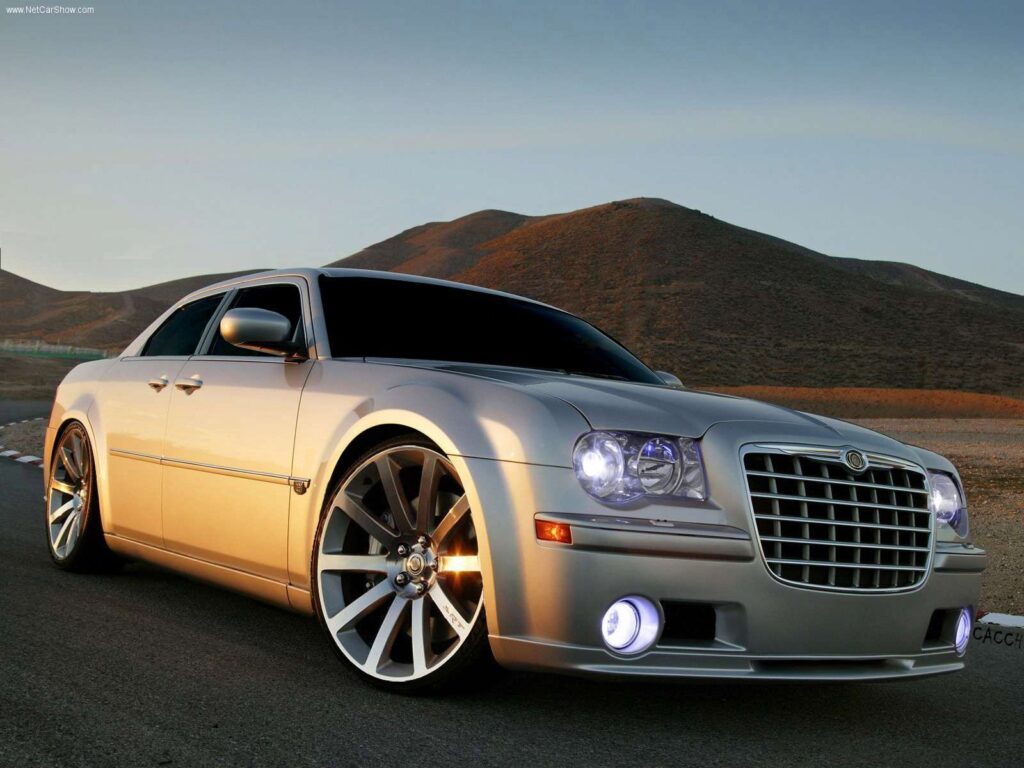
6. **Chrysler 300**The Chrysler 300 projects a bold styling and delivers a smooth highway ride, yet parking this full-size sedan, especially within tighter city environments, frequently presents a significant challenge. Its substantial physical dimensions, combined with a low seating position and compromised sightlines, often lead to curb contact or scuffed wheels. This is particularly true for drivers unaccustomed to maneuvering larger vehicles in confined spaces.
At over 198 inches in length and nearly 75 inches wide, the Chrysler 300 is notably longer and broader than many midsize sedans. This added bulk makes it inherently more difficult to accurately judge the vehicle’s extremities, particularly during reverse or parallel parking maneuvers. The car’s prominent front overhang often misleads drivers into believing they have more clearance than is actually available, frequently resulting in contact with parking barriers or curb edges.
A primary concern with the 300 is its low seating position and thick roof pillars, which collectively restrict outward visibility. Unlike many crossovers or compact vehicles where drivers can easily observe the curb from the window, the 300 necessitates heavy reliance on mirrors and sensors. These aids, however, are not always sufficient or precise enough for complex parking situations. Furthermore, the car’s standard backup camera and optional parking sensors often lag behind newer competitors in terms of resolution and overall effectiveness.
The rear camera’s narrow angle and low mounting position frequently misrepresent the actual distance to a curb. Adding to these difficulties is a turning radius exceeding 38 feet, which is larger than that of many SUVs, making three-point turns and tight curbside corrections both awkward and time-consuming. In urban parking scenarios, particularly parallel parking on narrow streets, the 300 often requires multiple adjustments, frequently resulting in it being positioned either too far from or too close to the curb.
Read more about: The Unwanted Symphony: MotorTrend’s Six Engines with the Most Divisive Sound Signatures
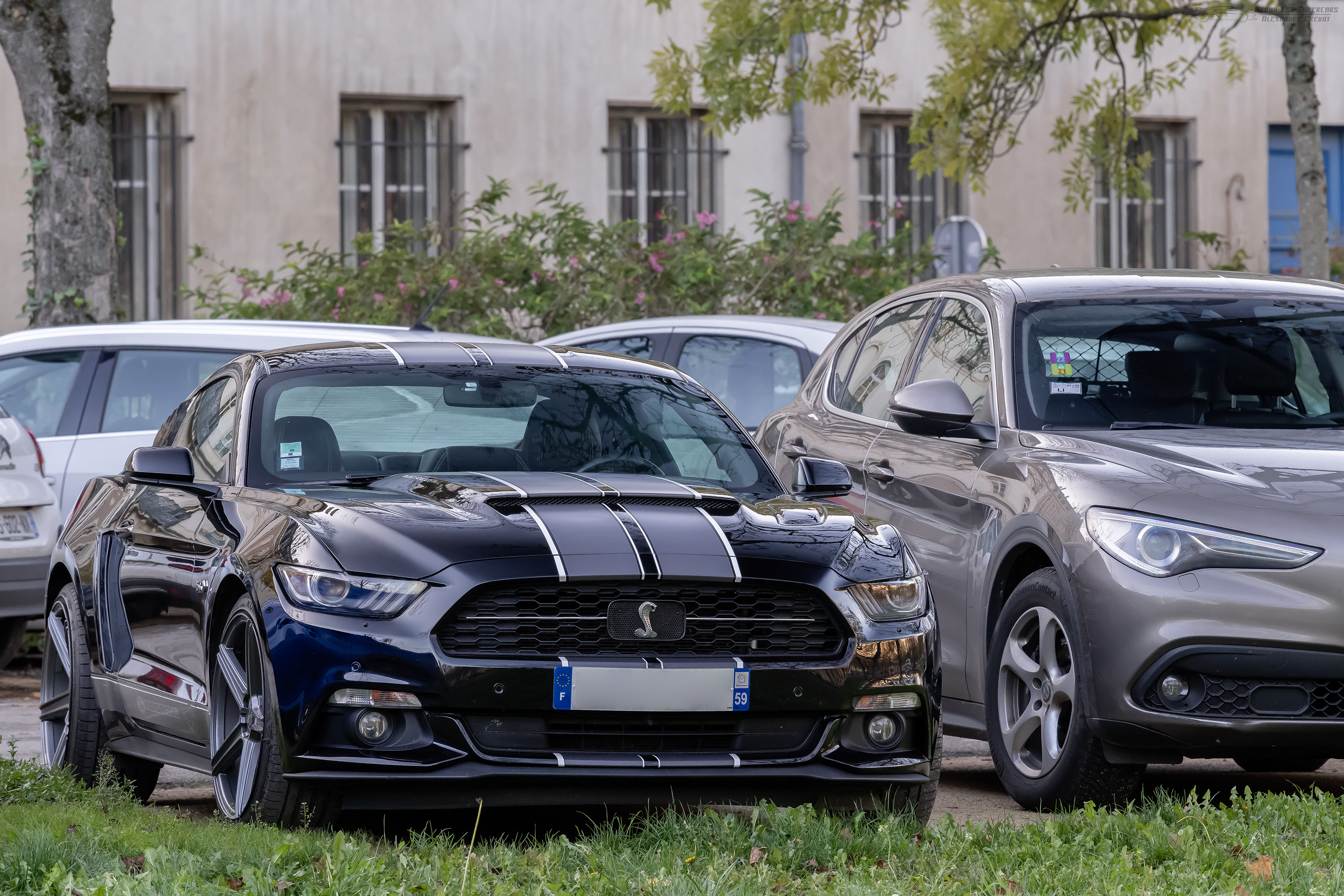
7. **Ford Mustang (Sixth Generation, 2015–2023)**The Ford Mustang, specifically the sixth-generation models produced from 2015 to 2023, stands as an iconic muscle car lauded for its performance, but it proves notably less graceful when it comes to navigating tight urban parking. While drivers appreciate its bold styling, rear-wheel drive dynamics, and powerful engine options, these attributes do not readily translate into effective low-speed control, particularly around curbs. This generation of Mustang embodies a design philosophy oriented toward open roads rather than constricted parking environments.
A significant hindrance to parking the Mustang is its long hood and low seating position, which severely compromise forward visibility. When attempting to pull into a parking space or align with a curb, drivers frequently misjudge the precise location of the vehicle’s front edge. This common error often results in bumper scuffs or the car’s nose extending further than anticipated. The front overhang extends considerably beyond the front wheels, meaning the visual reference point drivers use is often several inches short of the actual vehicle extremity.
Measuring nearly 189 inches in length, the Mustang is dimensionally mid-sized, yet it handles like a significantly larger vehicle during tight maneuvers. Its wide turning circle, approximately 37.8 feet, exacerbates these issues. Compared to more compact vehicles, the Mustang demands a greater amount of space to execute even basic parking movements, a characteristic particularly problematic on city streets where numerous corrections can cause frustration for both the driver and other motorists.
Visibility consistently emerges as a problematic area for this model. The thick rear pillars and high beltline significantly obstruct the view out of the back and sides, transforming parallel parking into a challenging guessing game unless the rearview camera is utilized. However, the standard backup camera on these models is not consistently reliable for accurate distance judgment, often providing a shallow, occasionally distorted perspective that underrepresents the actual curb distance. Many trims also notably lack front parking sensors, offering no assistance in preventing forward contact unless higher-spec packages are chosen.
Furthermore, the Mustang’s lowered ride height and sporty front fascia mean that even moderately raised curbs can easily scrape the bumper if approached incorrectly. The side mirrors offer limited downward angle adjustment, making it more difficult to accurately track the distance from the curb while parking compared to more upright crossovers or sedans. Ultimately, while the Mustang excels on highways and winding roads, it presents considerable challenges at low speeds, particularly around parking curbs.
Car Model Information: 2016 Ford Mustang GT
Name: Ford Mustang
Caption: 2018 Ford Mustang GT 5.0
Aka: Ford T5 (Germany)
Manufacturer: Ford Motor Company
Production: March 1964 – present
ModelYears: 1965–present
Class: Unbulleted list
BodyStyle: Unbulleted list
Layout: Front-engine, rear-wheel-drive layout
Categories: 1970s cars, 1980s cars, 1990s cars, 2+2 coupés, 2000s cars
Summary: The Ford Mustang is an American automobile manufactured and marketed by Ford since 1964, as Ford’s longest nameplate in continuous production. Currently in its seventh generation, it is the fifth-best selling Ford car nameplate. The namesake of the “pony car” automobile segment, the Mustang was developed as a highly styled line of sporty coupes and convertibles derived from existing model lines, initially distinguished by its pronounced “long hood, short deck” proportions.
Originally predicted to sell 100,000 vehicles yearly, the 1965 Mustang became the most successful vehicle launch since the 1927 Model A. Introduced on April 17, 1964 (16 days after the Plymouth Barracuda), over 400,000 units were sold in its first year; the one-millionth Mustang was sold within two years of its launch. In August 2018, Ford produced the 10-millionth Mustang; matching the first 1965 Mustang, the vehicle was a 2019 Wimbledon White convertible with a V8 engine.
The success of the Mustang launch led to multiple competitors from other American manufacturers, including the Chevrolet Camaro and Pontiac Firebird (1967), AMC Javelin (1968), and Dodge Challenger (1970). It also competed with the Plymouth Barracuda, which was launched around the same time. The Mustang also had an effect on designs of coupes worldwide, leading to the marketing of the Toyota Celica and Ford Capri in the United States (the latter, by Lincoln-Mercury). The Mercury Cougar was launched in 1967 as a unique-bodied higher-trim alternative to the Mustang; during the 1970s, it included more features and was marketed as a personal luxury car.
From 1965 until 2004, the Mustang shared chassis commonality with other Ford model lines, staying rear-wheel-drive throughout its production. From 1965 to 1973, the Mustang was derived from the 1960 Ford Falcon compact. From 1974 until 1978, the Mustang (denoted Mustang II) was a longer-wheelbase version of the Ford Pinto. From 1979 until 2004, the Mustang shared its Fox platform chassis with 14 other Ford vehicles (becoming the final one to use the Fox architecture). Since 2005, Ford has produced two generations of the Mustang, each using a distinct platform unique to the model line.
Through its production, multiple nameplates have been associated with the Ford Mustang series, including GT, Mach 1, Boss 302/429, Cobra (separate from Shelby Cobra), and Bullitt, along with “5.0” fender badging (denoting 4.9 L OHV or 5.0 L DOHC V8 engines).
Get more information about: Ford Mustang
Buying a high-performing used car >>>
Brand: Ford Model: Mustang
Price: $31,961 Mileage: 24,710 mi.
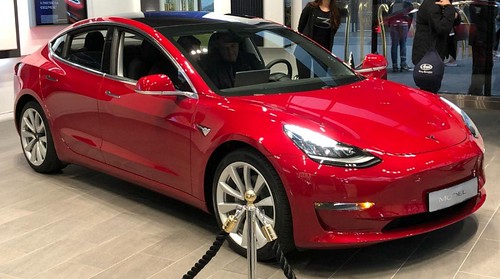
8. **Tesla Model S**The Tesla Model S is celebrated for its cutting-edge technology, impressive acceleration, and luxurious appeal, yet its curbside parking capabilities are surprisingly cumbersome. Despite being marketed as a vehicle at the forefront of automotive convenience, the Model S frequently struggles with a fundamental aspect: precise, curb-adjacent maneuvering. Numerous owners have reported incidents of wheel rash, parking misalignments, and low-speed miscalculations, particularly evident in the earlier iterations of the vehicle prior to substantial software enhancements.
A primary contributing factor to these parking difficulties is the Model S’s considerable overall length of approximately 197 inches, coupled with a relatively wide 77-inch body. These dimensions would not typically pose such a challenge in a conventional luxury sedan if it were equipped with the necessary visibility aids and offered the driver engagement crucial for close-quarters maneuvering. Unfortunately, the Model S often falls short in these areas. Despite its advanced technological suite, camera angles can feel excessively digital and distorted, especially when attempting parallel parking alongside a curb.
Tesla’s side cameras are positioned lower on the body, which often fails to provide the comprehensive wheel-to-curb perspective that would be highly beneficial in preventing damage. Unlike many of its competitors, the Model S does not typically include front or side curb view cameras designed to help monitor wheel position relative to sidewalks or other barriers. This absence makes it considerably harder for drivers to accurately gauge the proximity of their expensive rims to a curb, increasing the risk of costly cosmetic damage.
While the standard autopark system sounds promising in theory, it frequently struggles with spaces that deviate from standard dimensions, unusual curb heights, or slanted streets—conditions commonly encountered in urban parking environments. Many drivers have reported choosing to disengage the system entirely after experiencing inconsistent or awkward parking maneuvers. Furthermore, outward visibility from the cabin offers little assistance; the low-slung seating position and sloping roofline provide poor overall vision, particularly towards the rear quarters.
The long and gently curved hood of the Model S also makes it difficult to discern the exact location of the front edge. This often leads drivers to adopt overly cautious or excessively aggressive approaches, resulting in the car either stopping too far from the curb or coming dangerously close. An additional concern is the large, low-profile wheels commonly fitted to most Model S trims, which are exceptionally prone to curb rash. With minimal tire bulge to offer a protective buffer, even minor contact with a curb can result in expensive repairs.
Car Model Information: 2020 BMW X3 xDrive30i
Name: Tesla Model S
ModelYears: 2013–present
Alt: A front-three quarter view of a gray Model S
Caption: #2016–2019: First major update
Designer: Franz von Holzhausen
Weight: cvt
Height: cvt
Width: cvt
Length: cvt
Wheelbase: cvt
ElectricRange: cvt
Battery: kWh,lithium-ion battery
Motor: Unbulleted list
Transmission: Reduction drive
Related: Tesla Model X
Layout: Rear-motor, rear-wheel drive,Dual-motor, all-wheel-drive,Tri-motor, all-wheel-drive layout
BodyStyle: liftback,sedan (automobile)
Class: Full-size car
Assembly: Unbulleted list
Production: June 2012 – present
Manufacturer: Tesla, Inc.
Sp: us
Chassis: Unibody
Categories: 2020s cars, All-wheel-drive vehicles, All Wikipedia articles written in American English, All articles containing potentially dated statements, Articles containing potentially dated statements from 2025
Summary: The Tesla Model S is a battery-electric, four-door full-size car produced by the American automaker Tesla since 2012. The automaker’s second vehicle and longest-produced model, the Model S has been described as one of the most influential electric cars in the industry. Car and Driver named it one of the best cars of the year in 2015 and 2016. Its various accolades include the Motor Trend Car of the Year Award in 2013.
Tesla started developing the Model S around 2007 under the codename WhiteStar, with Henrik Fisker appointed as lead designer for the project. After a dispute with Elon Musk, Tesla’s CEO, Fisker was replaced by Franz von Holzhausen who, by 2008, had designed the production Model S’s exterior. Tesla unveiled a prototype of the vehicle in March 2009 in Hawthorne, California. In 2010, Tesla acquired a facility in Fremont, California, to produce the Model S, which was previously owned by General Motors and Toyota. Series manufacture of the car officially began at the Tesla Fremont Factory in June 2012. Tesla carried out the final assembly for European markets at its facilities in Tilburg, Netherlands, between 2013 and 2021.
Constructed mostly of aluminum, the Model S shares 30 percent of its components with the Model X—a crossover SUV that was introduced in 2015. The Model S has undergone several updates during its production, the most prominent ones occurring in 2016 and 2021. These updates have usually included modifications to the motor, such as changes to power or torque, revised exterior elements, and refreshed interior features. One such change included the 2015 introduction of Tesla Autopilot—a partial vehicle automation advanced driver-assistance system. The 2021 update led to the introduction of the high-performance, three-motor Plaid—Tesla’s most powerful model.
In 2015, the Model S was the world’s best-selling plug-in electric vehicle. In 2012, it was included on Time’s list of the Best Inventions of the Year, and the magazine later included it on its list of the 10 Best Gadgets of the 2010s in 2019. In 2014, The Daily Telegraph described the Model S as a “car that changed the world”. Road & Track argued that, with the introduction of the Plaid and features such as the yoke steering wheel, Tesla managed to turn the Model S into “perhaps one of the worst [cars in the world]”.
Get more information about: Tesla Model S
Buying a high-performing used car >>>
Brand: Tesla Model: Model S
Price: $26,485 Mileage: 40,004 mi.
Read more about: Unpacking Tesla’s ‘Closed Glass Roof’: The Model Y Standard’s Controversial Panoramic Secret and What It Means for Buyers
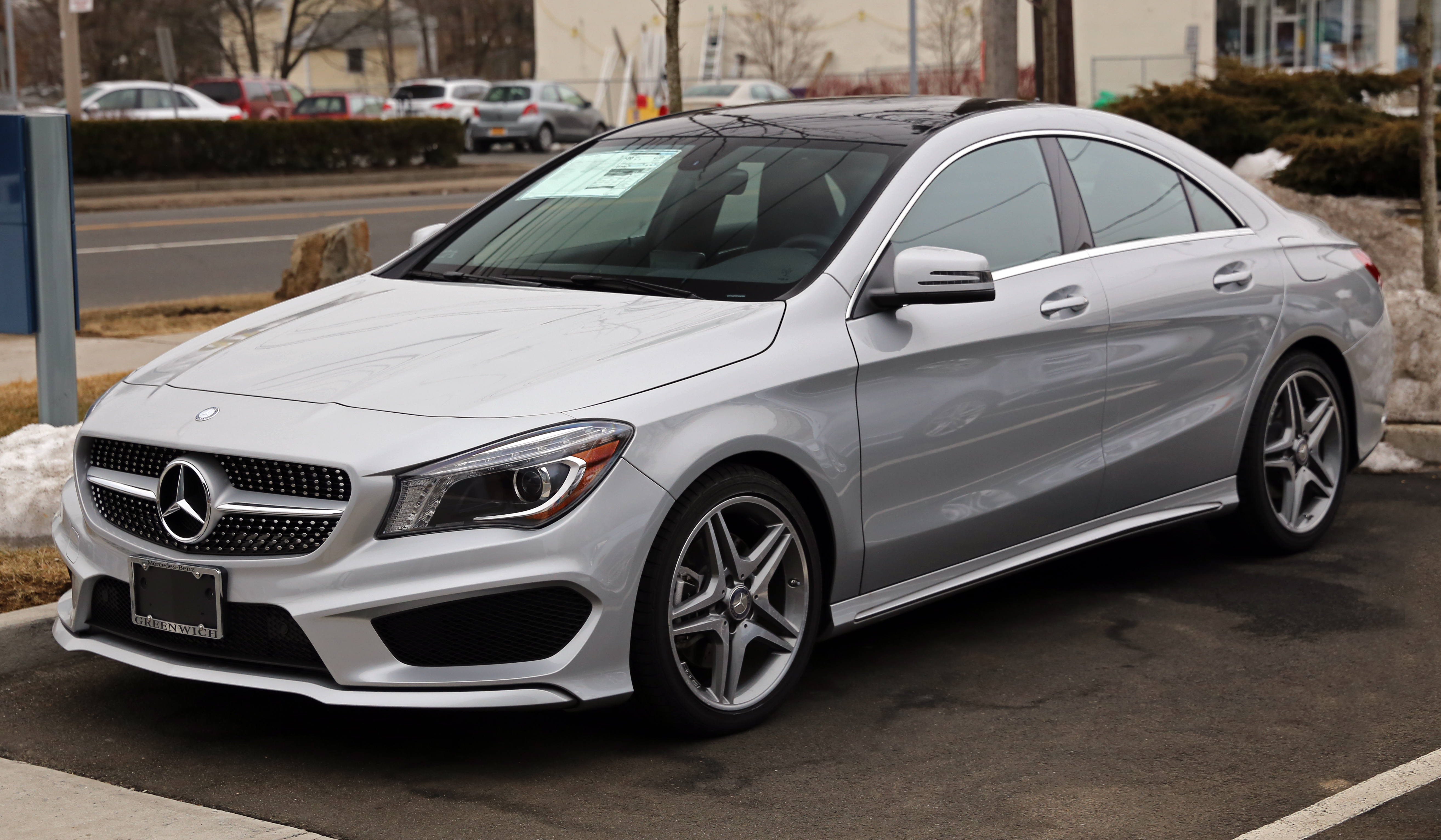
9. **Mercedes-Benz CLA-Class (First Generation, 2014–2019)**The initial generation of the Mercedes-Benz CLA-Class captivated consumers with its sleek, coupe-like profile, prestigious luxury badge, and an accessible entry price for a Mercedes vehicle. However, this striking aesthetic came with a significant trade-off: compromised low-speed maneuverability and notably poor visibility. For a vehicle categorized as a compact sedan, the CLA-Class is surprisingly difficult to park with precision, and the frequent occurrence of curb rash is a direct consequence of its design choices.
A core issue contributing to its parking challenges is the CLA’s dramatically swooping roofline and aggressively sloped rear window, which severely restrict rearward visibility. The view from the back of the car is constrained and narrow, failing to provide drivers with the crucial spatial awareness needed to accurately judge the distance to a curb or barrier. In contrast to more upright sedans, the CLA’s sport-inspired design clearly prioritizes visual appeal over practical visibility, a decision that creates significant difficulties in tight urban parking situations.
Despite its length of only about 183 inches, the CLA maintains a very low stance and possesses minimal ground clearance. This combination can readily lead to front bumper scrapes when drivers pull too close to curbs or navigate steep driveways. The vehicle’s sharp front overhang extends further than drivers often anticipate and, in lower trim levels, lacks sufficient visibility aids. Many CLA-Class models from this period did not include front parking sensors or curb-view cameras as standard features, requiring expensive option package upgrades to obtain basic distance judgment assistance.
The standard backup camera, while adequate in daylight conditions, does not offer wide-angle or top-down perspectives. Crucially, it lacks any curb-line indicators within the image, transforming reverse parallel parking into a frustrating guessing game. Drivers frequently err on the side of caution or, conversely, end up making contact with tires and scuffing wheels due to the camera’s limited field of view. Another complicating factor is the firm steering at low speeds. While precise at higher velocities, this steering characteristic feels uncooperative during the fine adjustments needed for slow-speed parking.
The steering often demands greater effort to make minor corrections once a driver has begun backing into a spot, contrasting sharply with more commuter-focused sedans that offer lighter, more forgiving steering at parking speeds. Ultimately, the CLA-Class demands a higher level of driver skill and patience than many entry-luxury buyers might anticipate. While this might not be an issue for those in suburban areas with ample parking, the car’s design in city environments makes it unusually susceptible to scraping, overshooting spaces, or simply being unable to fit where it seemingly should.
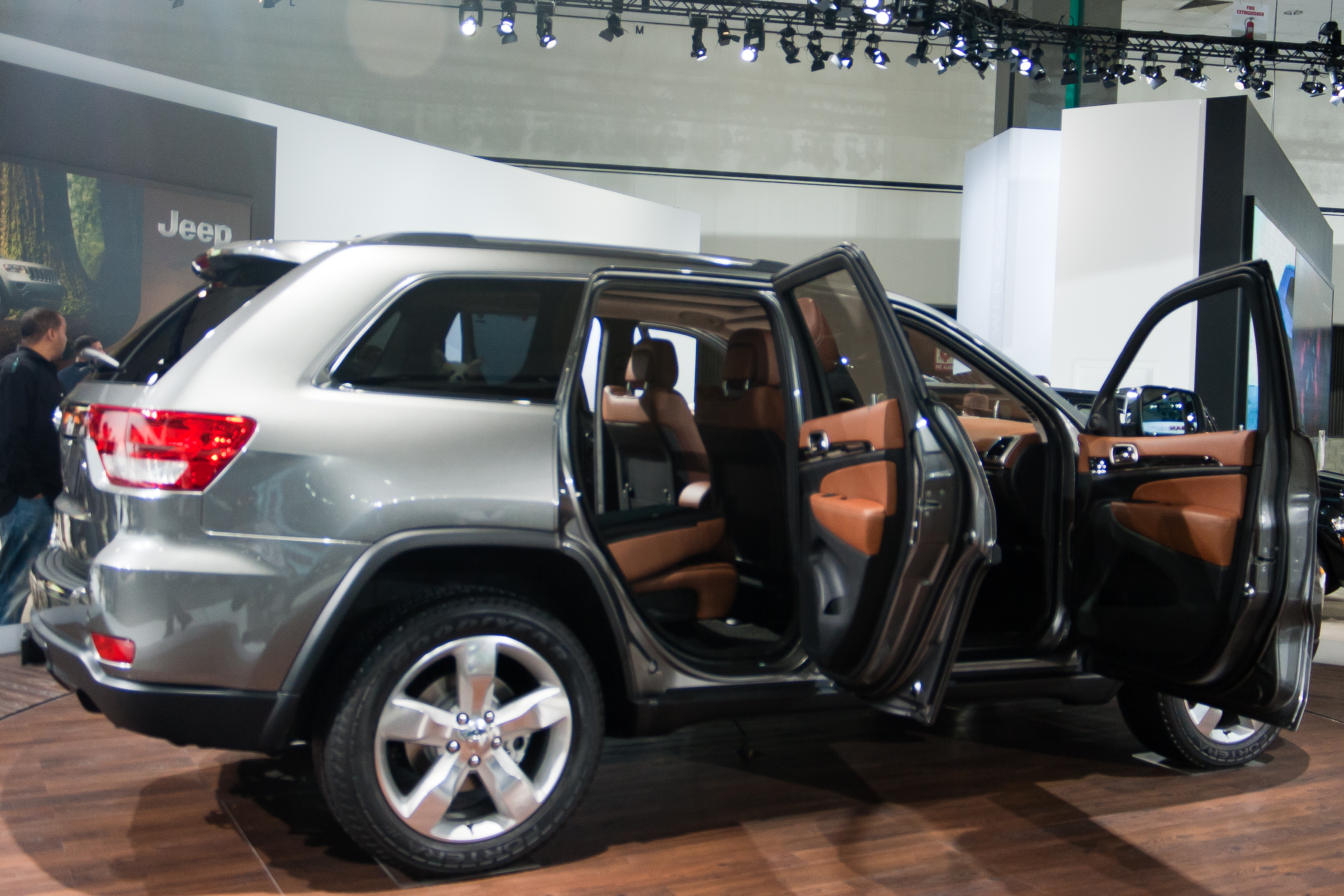
10. **Jeep Grand Cherokee (WK2, 2011–2021)**The Jeep Grand Cherokee, particularly the WK2 generation from 2011 to 2021, is widely acclaimed for its robust off-road capabilities, potent engine choices, and luxurious interior. However, while it effortlessly conquers rugged trails, this midsize SUV frequently struggles with a far more mundane task: curbside parking. Despite its aspirations for luxury and capability, the Grand Cherokee exhibits several design characteristics that make precise, close-quarters maneuvering more challenging than anticipated.
The WK2 Grand Cherokee, at approximately 190 inches long, is not excessively large for its class, yet its design elements create significant rearward blind spots. The combination of a boxy rear end, a high beltline, and thick rear pillars noticeably obscures both corners of the rear bumper. These blind spots become particularly problematic when attempting parallel parking or backing into a tight curbside space, making accurate judgment extremely difficult. The standard low-mounted backup camera, present on most trims, lacks a wide-angle view or curb assist markers, and its clarity is often insufficient for making precise judgments near raised curbs.
A notable flaw for urban drivers is the vehicle’s suspension ride height. While this elevated stance is excellent for off-roading, it works against drivers attempting to park in the city. The default ride height is noticeably higher than many other SUVs in its class, making it considerably harder to visually assess the wheels’ position relative to a curb. Unless the vehicle is equipped with the optional Quadra-Lift air suspension and the driver actively lowers it, judging curbside clearance remains a persistent challenge.
Adding to the difficulty is the Grand Cherokee’s large turning circle, approximately 37.1 feet. For a midsize SUV, this figure renders parallel parking and tight urban U-turns more complicated than expected. The steering, while well-refined at higher speeds, can feel heavy and slow to respond during the micro-adjustments frequently required near curbs or in crowded parking lots. Furthermore, many trims, especially older or base versions, do not include front parking sensors or curb-approach cameras, turning forward parking into a risky guessing game. Owners commonly report incidents of wheel rash or damaged front lips after misjudging the available space in front of the vehicle.
In essence, while the Grand Cherokee WK2 excels far off the paved road, it conspicuously underperforms when the task involves lining up precisely next to one. It exemplifies an SUV capable of conquering challenging rocky inclines, yet paradoxically prone to acquiring curb rash outside a local grocery store, underscoring a design paradox between its intended use and everyday urban practicality.
Parking may appear to be a minor aspect within the broader automotive experience, yet it is a revealing indicator of a vehicle’s overall usability and design efficacy. The clear distinction between cars that navigate parking with ease and those that frequently scrape curbs extends beyond mere size; it encompasses crucial factors such as visibility, ergonomic design, steering responsiveness, and the quality and integration of driver-assist features. Our initial section explored five vehicles meticulously engineered to alleviate parking stress, particularly in dense urban environments. These models, from the clear outward visibility of the Honda Fit to the intuitive camera systems, exemplify a user-centric design approach, offering helpful sightlines, tight turning radii, and responsive low-speed handling that transforms curbside parking into a second nature rather than a gamble.
Conversely, the second half of our analysis spotlighted five vehicles that complicate even the most straightforward parking maneuvers. Whether due to lengthy front overhangs, narrow camera angles, or thick pillars that create problematic blind spots, these cars consistently present challenges for close curb work. The Chrysler 300 and Tesla Model S, despite their inherent appeal on the open road, serve as cautionary examples of how sleek style or advanced technology do not always translate into practical, everyday functionality. Similarly, the Jeep Grand Cherokee and Ford Mustang highlight how a primary focus on performance or off-road capability can inadvertently detract from ease of parking.
Car Model Information: 2020 BMW X3 xDrive30i
Name: Jeep Grand Cherokee
Manufacturer: Jeep
Production: 1992–present
ModelYears: 1993–present
Class: unbulleted list
BodyStyle: sport utility vehicle
Layout: unbulleted list
Chassis: Vehicle_frame#Uniframe
Categories: 2000s cars, 2010s cars, 2020s cars, All-wheel-drive vehicles, All Wikipedia articles written in American English
Summary: The Jeep Grand Cherokee is a range of mid-sized sport utility vehicles produced by American manufacturer Jeep. At its introduction, while most SUVs were still manufactured with body-on-frame construction, the Grand Cherokee has used a unibody chassis from the start.
Get more information about: Jeep Grand Cherokee
Buying a high-performing used car >>>
Brand: Jeep Model: Grand Cherokee
Price: $26,485 Mileage: 40,004 mi.
Ultimately, the key takeaway is profound: a vehicle’s parking characteristics significantly influence your daily stress levels, contribute to the long-term wear and tear on wheels and bumpers, and can even reshape your overall driving confidence. What performs admirably on the open highway does not always prove effective in a crowded parking lot or a tight parallel space. For prospective car buyers, this underscores the importance of evaluating a car’s parking ability with the same scrutiny given to its horsepower or cargo capacity. It is highly recommended to actively attempt parallel parking during a test drive, carefully observe how well the backup camera frames curbs, and meticulously check for blind spots that might not be immediately apparent from specifications alone. Because, in the end, the curb remains impartial to how powerful, luxurious, or fast your car may be; its only concern is the precision with which you can keep your wheels from making contact.

